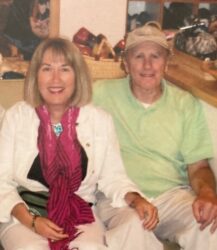Are You One of the 1%? Do You Really Think You Can Make a Difference in the World?
Successful executives who are part of the 1% (the wealthiest, most influential in society) often think they’re special and destined for great things. This life view is often self-fulfilling.
It’s probably the single most common characteristic among these most successful leaders—they truly believe they can make a difference.
“Never doubt that a small group of thoughtful, committed citizens can change the world. Indeed, it is the only thing that ever has.”—Margaret Mead, Cultural Anthropologist
But what if you are not part of the 1%? Do you feel you too can make a real difference in the world?
What if you knew that you could be a part of a small group that could bring down the crime rate, improve the economy and improve the quality of life for your whole community? Can one person in 100 influence 99 others in a positive way?
The 1% I am talking about is people who for the most part unknowingly, innocently but profoundly influence their society for the better every single day.
A Different 1%
It was in 1959 that Maharishi Mahesh Yogi, founder of the Transcendental Meditation program, spoke of the positive, peaceful global transformations that would naturally result when as little as 1% of the world’s population practiced the Transcendental Meditation technique. Then 16 year later, scientific research results were published, indicating statistically significant reductions in crime rates in 12 American cities when the threshold of 1% of each city’s population practicing the TM technique was reached. The finding was that when 1% of a community practiced the Transcendental Meditation program, the crime rate was reduced by 16% on average. At this time, the phenomenon was named the Maharishi Effect.
Maharishi explained how TM can produce this societal effect: “When the body becomes better, the mind becomes better, the behavior becomes better. With this orderly brain, a few people—one percent, half a percent—moving around in the city can improve the trends of life. It requires only a few people, just a few people! What do those few people have to do? Fifteen minutes morning and evening less gossip and close the eyes; fathom the depth of unboundedness deep within one’s own consciousness. Realize that fullness of life, that wholeness of life, that level of enlightenment which is kindled within, deep within everyone’s heart. Unfold that, experience that, and that is enough to make the whole day more orderly–life in orderliness; life in accordance with all the laws of nature.
“What is necessary is just a small area in the whole room to become lighted and the whole room becomes lighted. One simple, single individual brain becoming a little bit more orderly—how much more orderly could one become in fifteen minutes, with all the chaos and disorderliness of the whole day? But that little orderliness increasing in the mind of an individual is good enough to radiate its influence. One small filament becoming lighted is enough to light the whole room.
“Like that, one person, one slightly enlightened person, is good enough for the whole society. It’s a blessing for the whole society.”
Neuroscience shows that the brain becomes highly coherent during TM practice. This distinct brain pattern corresponds to the state of relaxed inner wakefulness and resets the brain’s natural ground state—restoring neurological balance, inner silence, and clarity of mind.1
The orderliness of brain functioning in the individual spills over into society. Since 1975 there have been numerous studies2 on the Transcendental Meditation technique that measure, using advanced statistical analysis, the even greater power of group meditation to change the social climate.
Whether you are in the 1% or not, you can join the enlightened 1% and help create a powerful foundation for a better world. You truly can make a difference.
1 Cognitive Processing, 11:1, 2010 Focused attention, open monitoring and automatic self-transcending: Categories of meditations.
2 Journal of Conflict Resolution, 32: 776-812, 1988;
Social Indicators Research, 47(2): 153-201, 1999.
About the Author
Vanessa Vidal is the national director of TM for Women in the USA





